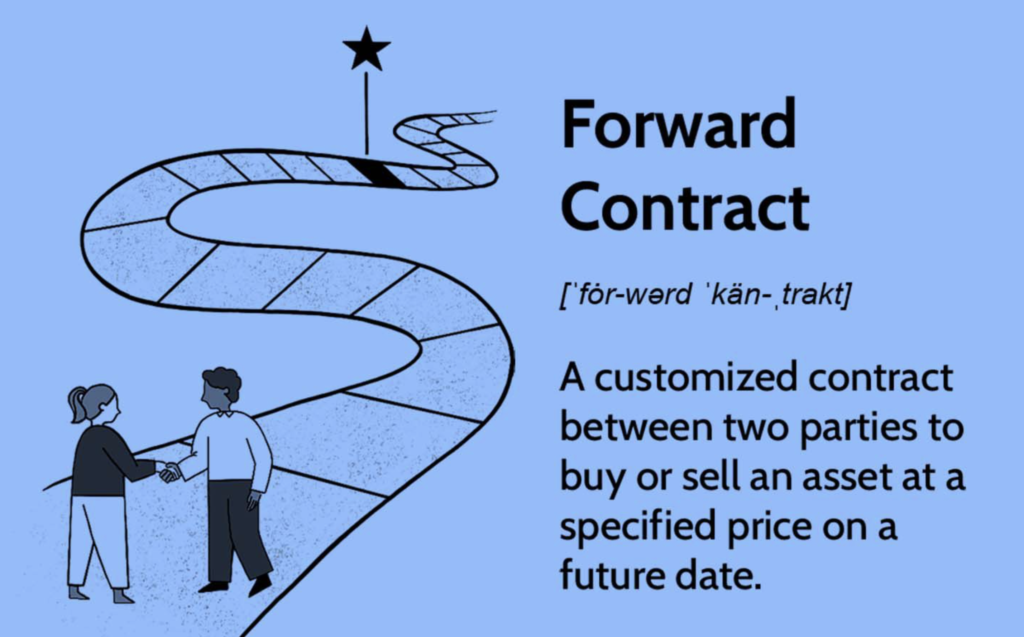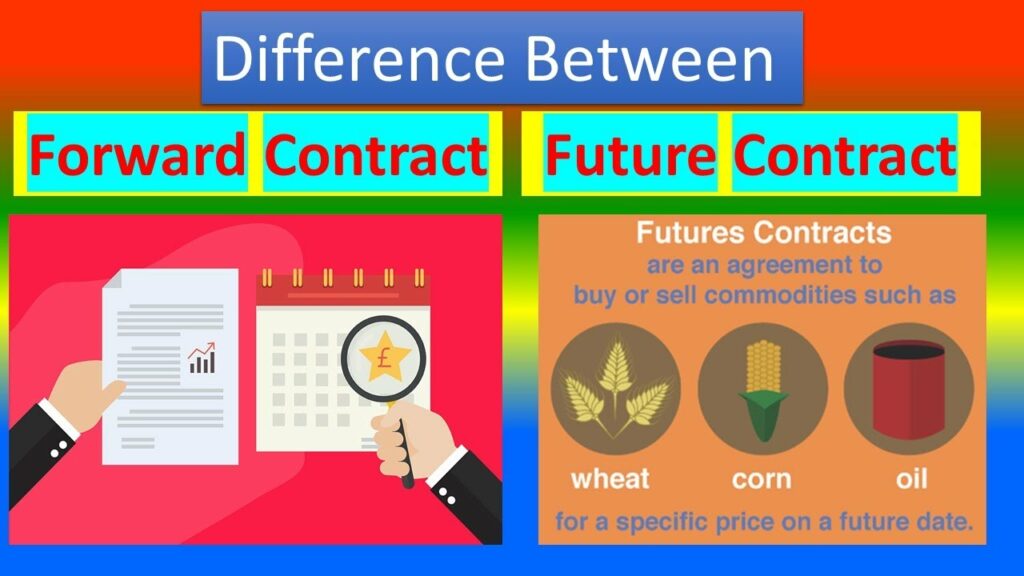A forward contract is a type of financial agreement that has been used for centuries, but they still play a significant role in today’s financial markets. These contracts are used to manage risk by allowing parties to agree on the price of an asset at a future date, which can be valuable for businesses, investors, and traders alike.
One of the main reasons why forward contracts are interesting to explore is because they can be used in a variety of different ways, depending on the specific needs of the parties involved. For example, a business owner may use a forward contract to lock in a price for a key input, such as oil or corn, to avoid the risk of price fluctuations that could impact their bottom line.
Investors and traders may also use forward contracts to speculate on the direction of an asset’s price, or to hedge their existing positions against potential losses. This can be especially useful in volatile markets, where sudden price swings can make it difficult to predict future performance.
Another interesting aspect of forward contracts is that they can be customized to suit the needs of the parties involved. This means that the terms of the contract can be tailored to reflect specific price, quantity, and timing requirements, which can help to reduce risk and maximize returns.
Overall, forward contracts are an important financial instrument that can provide a range of benefits and risks to those who use them. By exploring the intricacies of forward contracts, you can gain a deeper understanding of how they work and how they can be used to manage risk in today’s complex financial markets.
How Forward Contract Work?
A forward contract is a type of agreement between two parties to buy or sell an asset at a specific price on a future date. In the context of commodities, such as copper, forward contracts can be used to manage price risk and secure future supplies.

For example, a copper mining company may enter into a forward contract with a manufacturer to sell a specified quantity of copper at a fixed price on a future date. In this scenario, the mining company would agree to deliver the copper to the manufacturer at the specified price, while the manufacturer would agree to purchase the copper at the agreed-upon price.
The terms of the contract would include details such as the quantity of copper, the price per pound, and the delivery date. Once the contract is signed, both parties are bound by the terms of the agreement and must fulfill their obligations at the agreed-upon time.
The benefit of the forward contract is that it allows both the mining company and the manufacturer to hedge against price fluctuations in the copper market. The mining company is guaranteed a fixed price for its copper, regardless of how the market price may change in the interim. The manufacturer, in turn, is guaranteed a reliable supply of copper at a known price, which can help to ensure stable production costs and pricing for their own products.
How To Calculate The Price of a Forward Contract?
The price of a forward contract can be calculated using the following formula:
F = S * (1 + r)^t
Where: F = the price of the forward contract S = the spot price of the underlying asset r = the risk-free interest rate t = the time until expiration of the forward contract

The spot price is the current market price of the underlying asset, such as a commodity or currency. The risk-free interest rate is the rate at which an investor can borrow or lend money without any risk of default, such as the rate on a U.S. Treasury bond. The time until expiration is the length of time between the current date and the date on which the forward contract will expire.
For example, let’s say the current spot price of copper is $4 per pound, the risk-free interest rate is 3%, and a forward contract for copper with a delivery date one year from now is being considered. Using the formula, the price of the forward contract would be:
F = $4 * (1 + 0.03)^1 F = $4.12 per pound
This means that the buyer of the forward contract would agree to purchase copper at $4.12 per pound, one year from now, regardless of the prevailing market price at that time.
It’s important to note that the actual price of a forward contract may be influenced by a variety of factors, such as supply and demand, market expectations, and counterparty risk. As such, the formula provides only a theoretical estimate of the forward price, and actual prices may differ from the calculated value.
Difference Between a Future Contract and a Forward Contract

A forward contract and a futures contract are both types of agreements to buy or sell an asset at a specific price on a future date. However, there are several key differences between the two:
- Trading Platform: Forward contracts are traded over-the-counter (OTC), meaning that they are customized agreements between two parties. Futures contracts, on the other hand, are standardized contracts that are traded on a centralized exchange, such as the Chicago Mercantile Exchange (CME).
- Flexibility: Since forward contracts are customized, they offer more flexibility than futures contracts. Parties can negotiate specific terms, such as the quantity, delivery date, and price of the underlying asset. Futures contracts, in contrast, are standardized, with fixed contract sizes and delivery dates.
- Counterparty Risk: Since forward contracts are private agreements, they carry the risk that one party may default on the contract. Futures contracts, in contrast, are guaranteed by the exchange, which acts as the counterparty to all transactions. This means that the risk of default is eliminated, but traders must pay a margin to cover potential losses.
- Settlement: Forward contracts are settled at the end of the contract term, with the buyer and seller exchanging the underlying asset and the agreed-upon price. Futures contracts, in contrast, can be settled in two ways: either by taking delivery of the underlying asset, or by offsetting the contract with an opposing trade before the delivery date.
In summary, forward contracts are more flexible and customized, but carry the risk of default, while futures contracts are standardized and guaranteed by the exchange, but offer less flexibility.
Conclusion
Forward contracts can be a useful tool for investors looking to manage risk and make money by locking in a future price for an asset. However, the decision to invest in a forward contract should be based on a thorough analysis of market conditions, as well as an understanding of the potential risks and rewards involved.
Investors may choose to invest in a forward contract if they have a strong expectation that the price of an asset will rise in the future. By locking in a lower price now, they can potentially realize a profit when the asset is sold at the higher future price. Similarly, investors who expect the price of an asset to fall may choose to sell a forward contract to lock in a higher price now, allowing them to profit when the asset is purchased at a lower future price.
However, investors should also consider the risks involved with investing in a forward contract. These include the risk of default by the counterparty, changes in market conditions that may impact the value of the contract, and the possibility that the investor may miss out on potential gains if the price of the asset rises higher than the forward contract price.
Overall, investing in a forward contract can be a way to manage risk and potentially make money in the future. However, investors should carefully consider their risk tolerance, investment goals, and the current market conditions before making any investment decisions.
n.b: this is not financial advice
